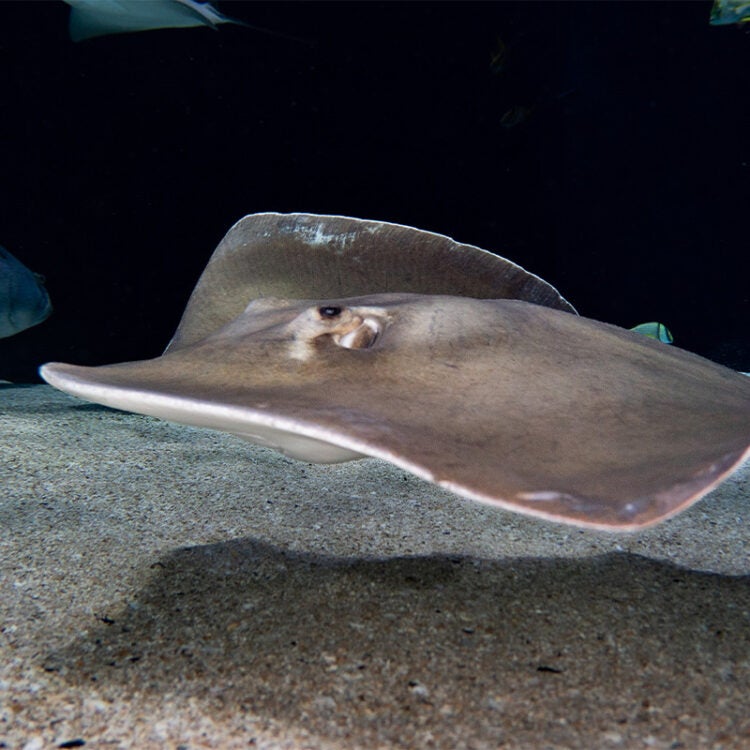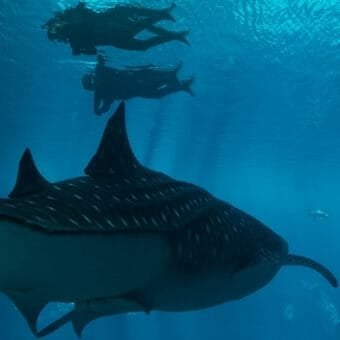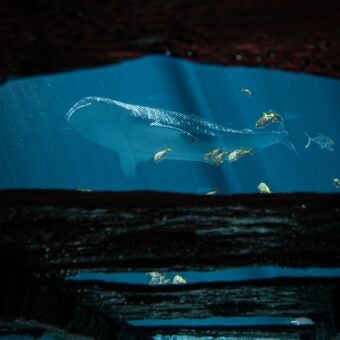-
Size
3.4 feet (1 m) -
Diet
Crustaceans and small fish -
Range
Indo-Pacific -
Habitat
Tropical shallow waters, inshore on sandy substrates
Physical Characteristics
- Maximum length 3.4 feet (1 m).
- Spade-like shape, predominantly brownish gray with an elongated, thorny tail.
Animal Fact
The pointed-nose stingray's eggs develop inside the mother’s body and hatch inside. The animals are then born live.
Diet / Feeding
- Diet consists of crustaceans and small fish.
Range / Habitat
- Occurs in the Indo-Pacific from Southern African to Australia and Papua New Guinea. Widely distributed, but patchy populations.
- Found in tropical shallow waters, inshore on sandy substrates commonly at depths below 164 feet (50 m).
Reproduction & Growth
- Ovoviviparous; eggs develop inside the mother’s body and hatch inside. Animals are then born live.
Conservation Status
- “Vulnerable” on the IUCN Red List.
Additional Information
- Other common names include “Jenkins Whipray,” “Brown Stingray,” and “Sharpnose Stingray.”
- Skin is highly valuable due to the large thorns on the tail.
- Caught with demersal tangle nets, bottom trawl and longline fisheries for its meat, cartilage and skin.
- T.E.D.s and other exclusion devices have greatly reduced the bycatch of this species.



